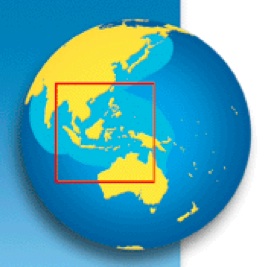
BENEFITS FROM
ASEAN FREE TRADE AREA (AFTA) TARIFF CUTS
Benefits from AFTA: - The elimination of tariffs should
result in product price reductions throughout ASEAN
- Encouraging higher market competition - Help ASEAN countries' products gain access to a regional market that incorporates many substantial advantages, e.g. a population of more than 580 million, $1.5 trillion gross domestic product, convenient transport systems, huge international trade worth $1.7 trillion a year, and foreign investment of $60 billion - Consumers will benefit from cheaper prices of goods given lower tariffs on a host of raw materials used by the region's producers. - Some of processing factories are expected to enjoy cheaper imported raw materials in the face of the tariff elimination, cutting their production costs - ASEAN will be integrated into a single market which is an important point because the market will be stronger and larger with a high population - the export and investment sectors will generate higher potential in the long term Negative and Positive Effects: Import tariffs will fall to zero for a wide range of agricultural goods, such as onion, garlic, tea, sugar, rice, soybeans, palm oil, and other farm products tariffs are now eliminated as of January 1, 2010. The tariff lines under CEPT-AFTA also cover a wide range from finished consumer products such as air-conditioners; food products such as chili sauce, fish and soya sauces; intermediate materials such as motorcycle parts and automobile cylinders; and other products such as iron and steel, plastics, machinery and mechanical equipment, chemicals and prepared foodstuffs, paper, cement, ceramics and glass. Some countries, such as, Thailand, have their products on the countries' sensitive lists. Those are to carry a 5% tariff and include coffee beans (down from 20%), copra (from 15%), potatoes (from 10%) and cut flowers (from 10%). Thailand is concerned about the impact on some key agricultural products such as rice and palm oil. However, a number of Thai sectors should gain substantially from the free trade due to a decline in production costs. They include textiles and garments, leather products, food products, gems and jewelery, vehicles and parts, mineral products, and electronics. The four less developed members of the regional, such as Cambodia, Laos, Burma and Vietnam will have until 2015 to reduce their tariffs to 0-5% under their AFTA commitments. For Vietnam, its lower production costs and rising output of rice are expected to be competitive with Thailand and affect Thailand’s rice market share. Thailand expects to lose a 0.5% share of the rice trade, or around $13 million, to Vietnam. For Malaysia and Indonesia, their palm oil price are more expensive than that produced from Thailand. The loss of palm oil market share to Malaysia was forecast at 2.6% or US$46 million because Malaysia is the world's largest producer and highly efficient. Malaysian producers' expansion to Indonesia will further lift their productivity. Therefore, AFTA expansion could affect the Thai economy both negatively and positively. "But the good would far outweigh the bad", said Thailand's Prime Minister Abhisit Vejjajiva, according to Bangkok Post newspaper. He announced that the government had mapped out assistance measures funded by various ministries and also pledged stringent import regulations to ensure the quality of farm goods, as well as to protect Thai consumers. The governments will lose income from tax collections but in the long term the chances for exports are wider when compared with countries outside ASEAN. Thus, the nation will benefit overall. Experts suggested that for Thailand, the challenge continues to be upgrading skills and developing products to serve consumer demand, which will help increase brand awareness, add value and competitiveness to Thai products in global markets. Mr Dhanin Chearavanont, a leading food exporter and the Chairman of Charoen Pokphand (CP) Group, also said recently that the the zero tariff scheme under the ASEAN Free Trade Area would attract more foreign investors to Thailand. When compared to other ASEAN nations, Thailand's business environment remains attractive. He explained that the zero duty on agricultural products under the AFTA would benefit the country as a whole in the long run because 95% of products are not taxed. In the short term, some Thai products would be hit by higher competition from trade liberalization. Mr Dhanin called on the government to prepare measures to help affected producers. Read more about ASEAN Free Trade Agreement on our website:  - Free
Trade Agreement with Asia - Free
Trade Agreement with Asia |

